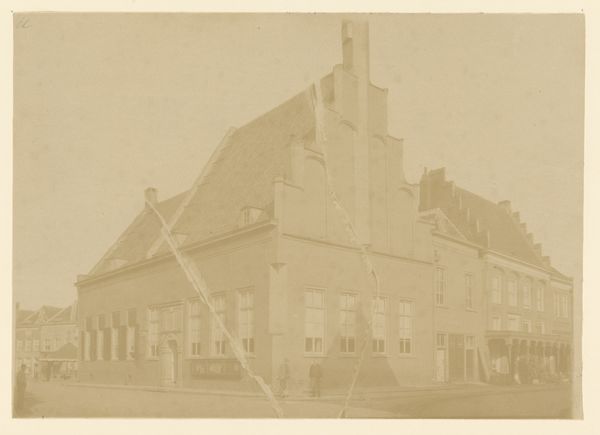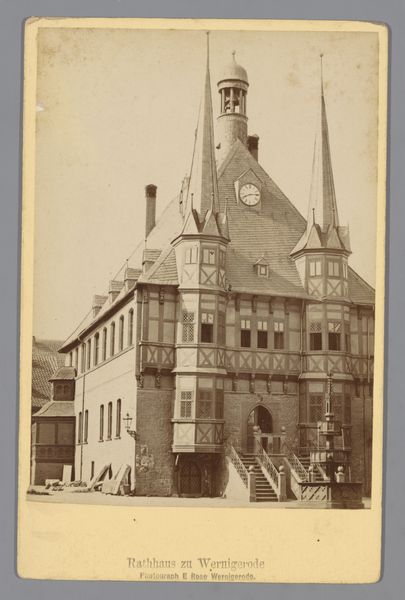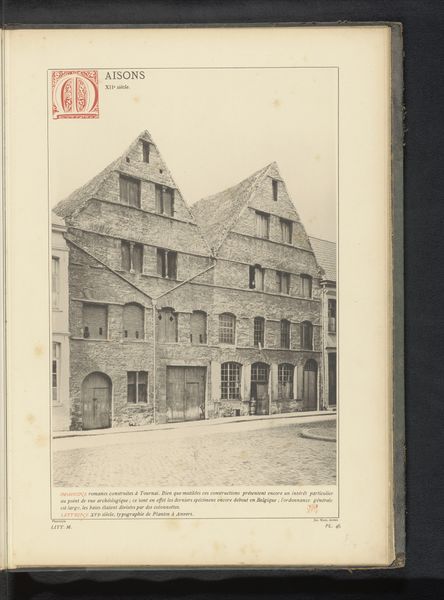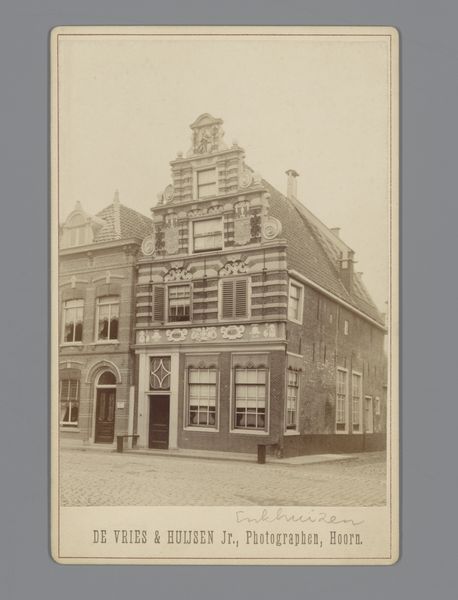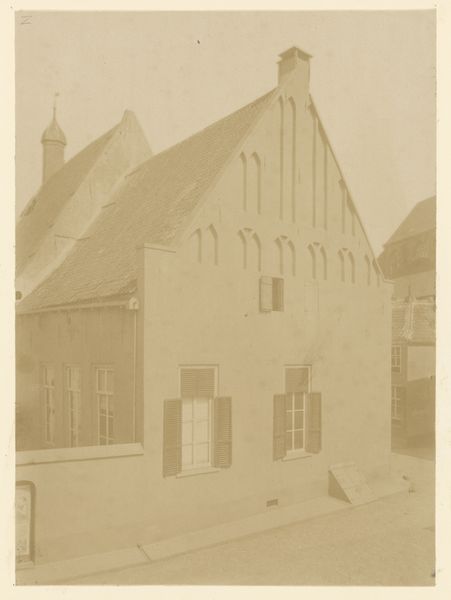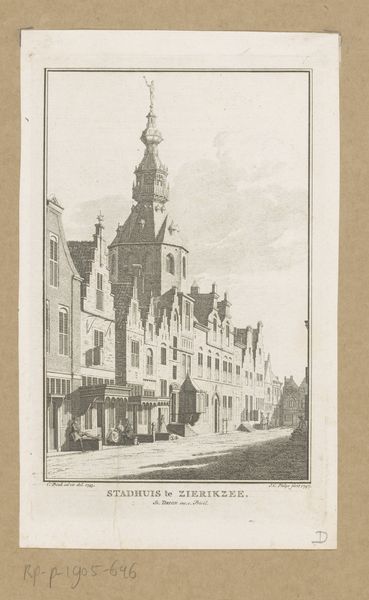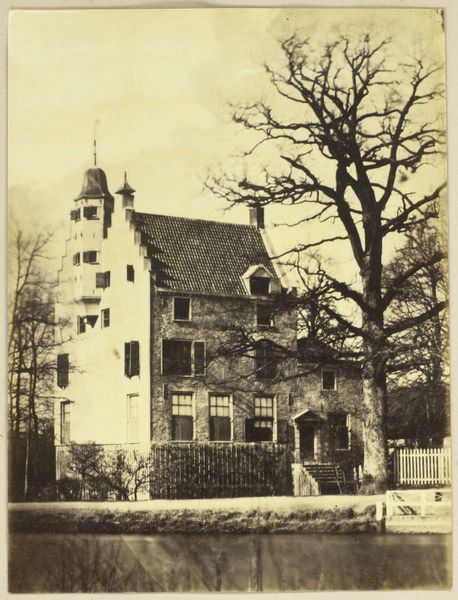
drawing, print, etching
#
drawing
# print
#
etching
#
cityscape
#
street
#
realism
#
building
Dimensions: height 317 mm, width 238 mm
Copyright: Rijks Museum: Open Domain
Curator: This etching, titled "Het Toreken aan de Vrijdagmarkt te Gent," was created by Julien Louis Camille Boutry sometime between 1800 and 1898. Editor: It’s a striking cityscape. There’s a certain solidity and presence that really comes through, particularly given the monochrome palette. It looks quite somber, even imposing. Curator: I think that perceived solidity stems from the etching technique itself. Consider how Boutry painstakingly layered fine lines to build up the image of this historical building, giving it a weight beyond its mere representation. I can almost feel the cobblestones under my feet. I find the cityscape evokes not only an atmosphere but also raises questions about civic power. What sociopolitical dialogues were held inside? Editor: Exactly. And consider the materials at play here, Curator! The acid etching process allowed for a kind of mass production, making art accessible beyond the elite, though still limited, of course. It highlights the social function of the artwork: was this to immortalize the building, to document it, or something more propagandistic, given its grandeur? How were images like this consumed and understood? Curator: That's a compelling point. Access indeed, wasn't broadly available, given structural and socio-economical restraints of the time. These detailed cityscapes also perpetuated and reflected notions of national identity, civic pride and implicitly also power dynamics and access across class lines. The meticulous detail does present a curated version of urban life. This speaks to the prevailing class structures influencing the narratives that survive. Editor: I'm thinking of the labor involved, both Boutry’s and also those who built the physical structure. This meticulous etching is labor-intensive, just as constructing a building with such elaborate stepped gables would have been. It prompts reflection on skill, craftsmanship and the value attributed to these kinds of work across time. Also, it feels really static, empty, which gives me a creepy feeling, especially combined with the buildings sharp angles and corners. Curator: Your read really expands our view of it beyond just an architectural documentation, reminding us that every creation, every cityscape even, has multiple makers. Ultimately, this etching encapsulates not just a moment in time, but a nexus of histories, politics, and power relationships rendered visible through skilled handiwork. Editor: It shows how closely tied urban planning and craftsmanship is to larger social and power structures of the past and also to the current present, I might add.
Comments
No comments
Be the first to comment and join the conversation on the ultimate creative platform.
